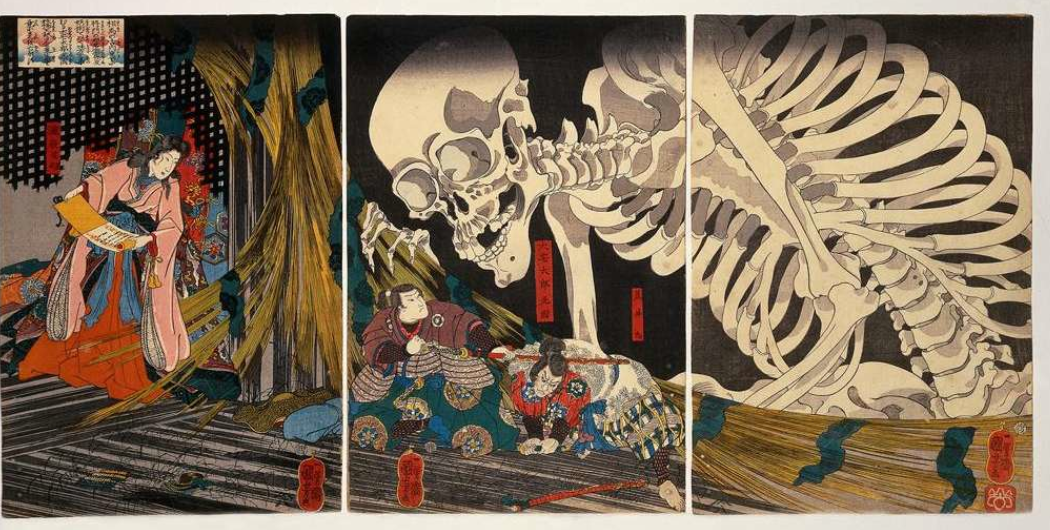Overview/Abstract
This (experimental) project has to do with a previous work for URECA surrounding mythology as well as previous research in the field of Japanese erotic-grotesque (ero-guro-nansensu) With a special focus on grotesque representations in Japanese tales, this work hopes to shed light on the contexts and reasons behind Setsuwa tales.
Aesthetic Approach
- Illustrative
- Dotwork and linework
- Typewriter
- One color, Black and white
- Watercolor and hard lines (Aubrey Beardsley)
- Ukiyo-e effect
- Fabric Application
Content
- The Grotesque and Disembodied in Setsuwa tales
- Setsuwa Tales: Setsuwa means “spoken story”. As one of the vaguest forms of literature, setsuwa is believed to have been passed down or presented in the form of narrations. Setsuwa are based foremost on oral tradition and existed primarily as folktales or in other non-written forms before being recorded and committed to text. However, some writers question whether all setsuwa tales were originally oral tradition, or only mostly so. Although there are no formal rules regarding what constitutes setsuwa as a genre, stories in the setsuwa style “have in common brevity; an uncomplicated plot unfolded in plain, direct language; character delineation through dialogue and action rather than through description and psychological analysis; and a predilection for amusing, starting, dramatic, or marvelous subject matter.”[attribution needed]
Setsuwa vary quite considerably in topic, but can be divided into two main groups: general and Buddhist. Buddhist setsuwa often contain themes of karmic retribution or miracles, while the content of “general” setsuwa is largely either secular in nature or focused on traditional Japanese religion and spirituality such as Shintoism.
Many setsuwa collections were compiled during the Heian and Kamakura periods (8th-12th centuries, 12th-14th centuries). These collections were often assembled by Buddhist monks, but the authorship of many such works is still unknown or heavily debated.
Keywords/ themes
- Narrative, graphic storytelling, lore, mythology, history, japanese culture
Proposed mediums/methods of research
- Journals
- Zines
- Books
- Art books
- Fabric pattern design
Artist/writer references
- Ambiguous Bodies: Reading the Grotesque in Japanese Setsuwa Tales, by Michelle Osterfeld Li
- Makoto Aida
- NOBUYOSHI ARAKI
